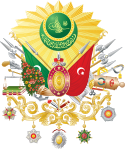Sulejman II
| ||
 | ||
 Tugra Sulejmana II | ||
 | ||
| Sułtan Imperium Osmańskiego | ||
| Okres | od 1687 do 22 czerwca 1691 | |
| Koronacja | 8 listopada 1687 | |
| Poprzednik | Mehmed IV | |
| Następca | Ahmed II | |
| Dane biograficzne | ||
| Dynastia | Osmanowie | |
| Data urodzenia | 15 kwietnia 1642 | |
| Data śmierci | 22 czerwca 1691 | |
| Przyczyna śmierci | choroba serca | |
| Ojciec | Ibrahim I | |
| Matka | Saliha Dilasub | |
| Rodzeństwo | Mehmed IV Ahmed II | |
Sulejman II (osmańskotur. سليمان ثانى Süleymān-i sānī) (ur. 15 kwietnia 1642, zm. 22 czerwca 1691) – sułtan Imperium Osmańskiego od 1687 do 1691.
Był młodszym bratem Mehmeda IV (1648–1687).
Od czasów Ahmeda I zaprzestano tradycyjnego bratobójstwa, dlatego też większość życia spędził w luksusowej niewoli (w swego rodzaju „złotej klatce” zwanej kafes, będącej częścią pomieszczeń haremu) w Topkapı, wśród kobiet, eunuchów i opiekunów.
Po objęciu władzy usiłował odbudować potęgę Imperium Osmańskiego w wojnie z Ligą Świętą. W sierpniu 1691 w bitwie pod Slankamenem jego dowódca Mustafa Köprülü poniósł kolejną klęskę.
Wcześniej, bo już w czerwcu 1691, Sulejman II zmarł w wyniku choroby serca.
| ||||
Media użyte na tej stronie
Every sultan of the Ottoman Empire had his own monogram, called the tughra, which served as a royal symbol. A coat of arms in the European heraldic sense was created in the late 19th century. Hampton Court requested from the Ottoman Empire a coat of arms to be included in their collection. As the coat of arms had not been previously used in the Ottoman Empire, it was designed after this request, and the final design was adopted by Sultan Abdul Hamid II on 17 April 1882.
Tughra (i.e., seal or signature) of Suleiman II, Sultan of the Ottoman Empire (1687-1691). An explanation of the different elements composing the tughra can be found here.
Süleyman II
Autor: Buho07, Licencja: CC BY-SA 3.0
Ottoman Imperial Standard, Late 19th and early 20th Century. Each Sultan had his own Tughra.




